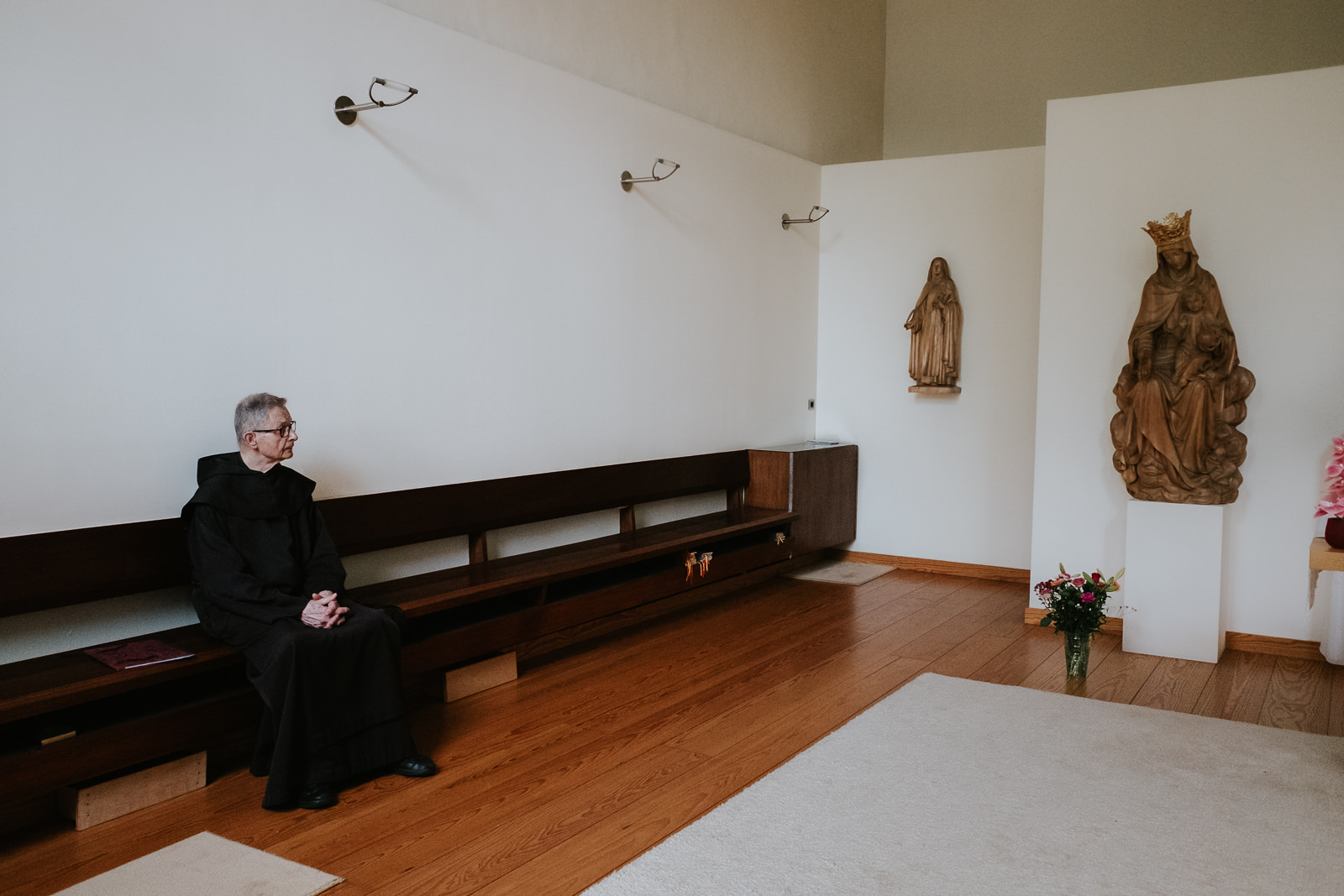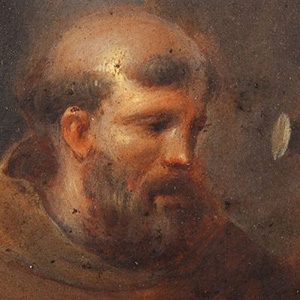MONTASIC COMMUNITY
Carmel Life
Flemish Carmel comprises three monastic communities of the male order in Flanders (Bruges, Ghent and Berchem) and a monastery in Sweden founded by the Flemish Carmel (Norraby). In addition, there are six communities of Carmelite sisters in Flanders and a monastery in Denmark.
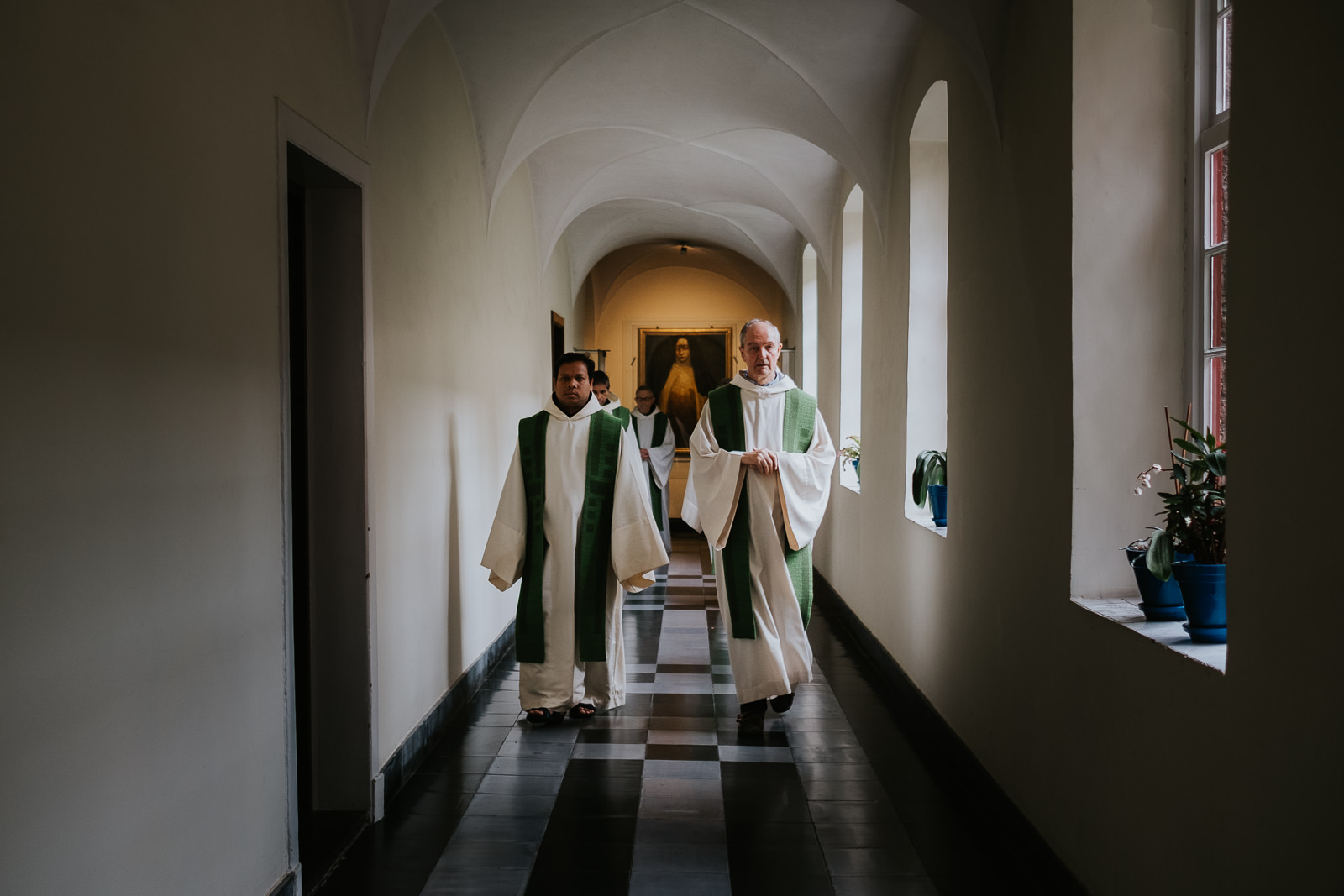
Paradox?
The Carmelites seem to capture their lives in a paradox: a community of hermits. Yet, this best describes it. We combine moments of solitude, in which we are alone in our monastery cell, with communal moments of prayer, meals and congregation. It is exactly this balance that shapes Carmel’s monastic life.
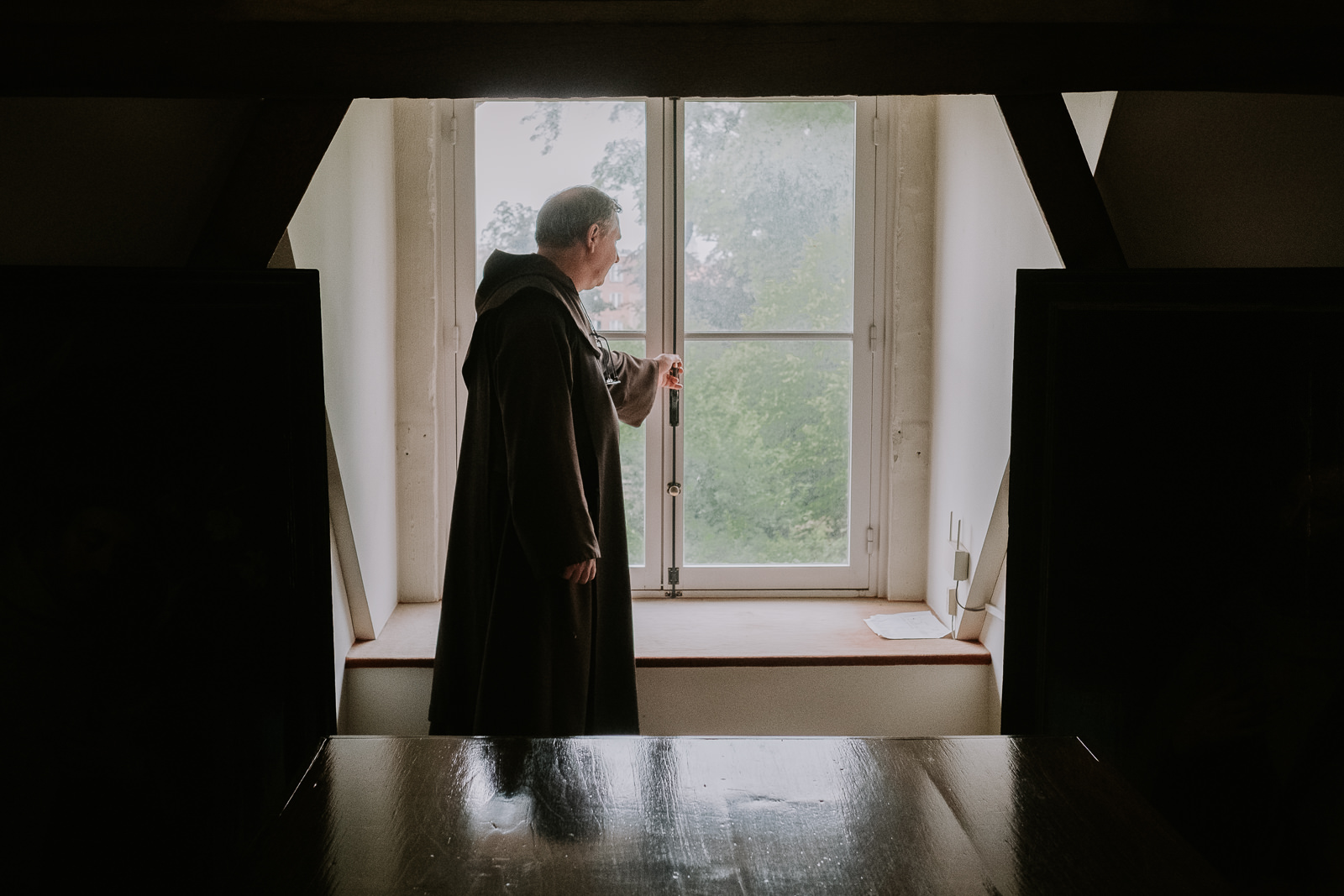
Silence
We cherish silence not only in prayer, but also during meals and our work in each person’s own monastic cell. Yet we are not a ‘silent monastic order’: people visit us to receive spiritual guidance, pastoral conversations and/or the sacrament of penance and reconciliation (confession). What’s more, we offer the space to join in our daily Eucharistic celebrations and sometimes part of the Liturgy of the Hours too.
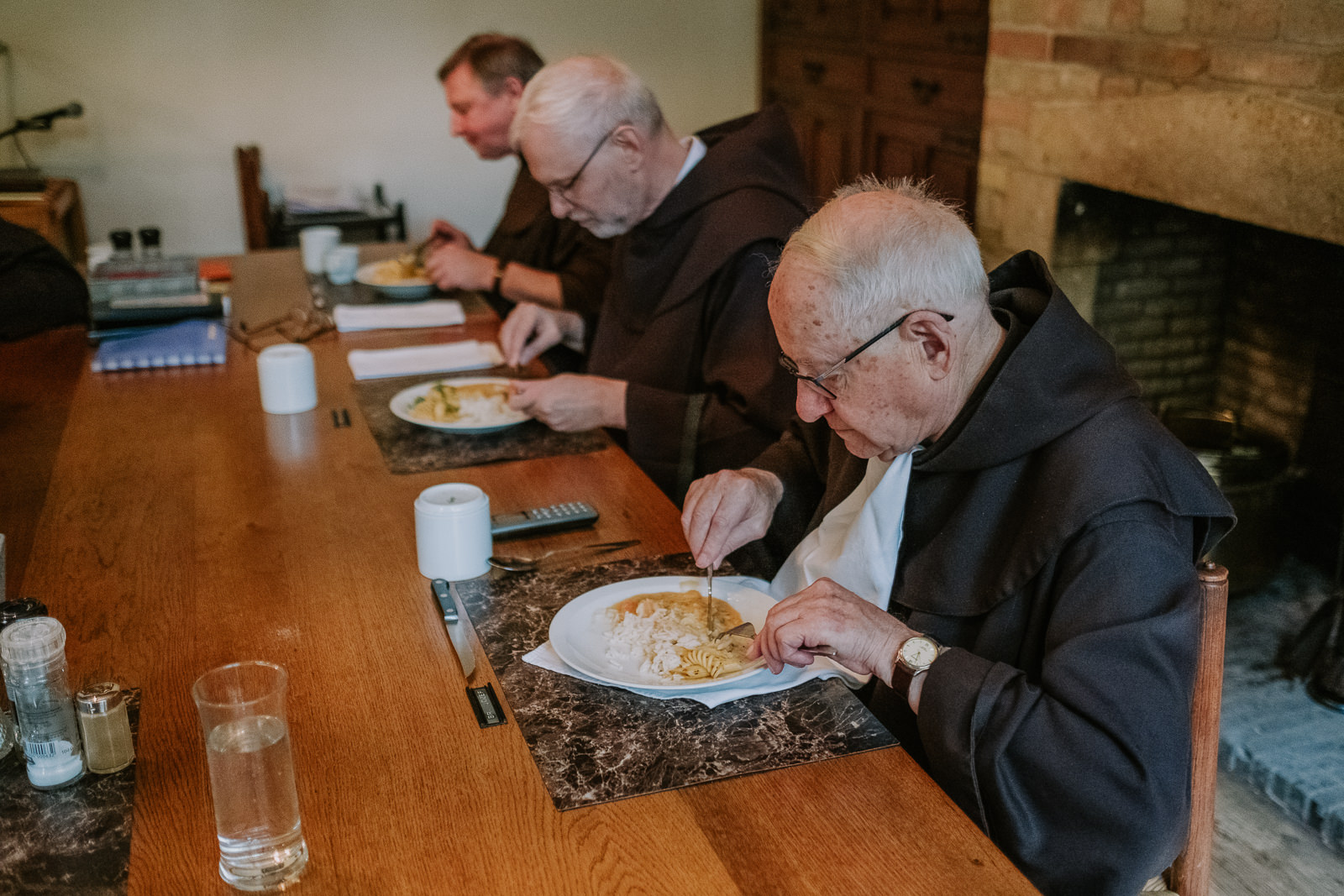
History in Bruges
The first Discalced Carmelites arrived in Bruges in 1630, when they moved in to a house near Gentpoortstraat. After a few years, they moved to the present monastery in Ezelstraat, although it has been considerably renovated since then. Other monastic orders were initially suspicious of the arrival of the Carmelites, fearing they would lose money due to the ‘competition’ with the newcomers. But when the Carmelites volunteered to care for the sick who were suffering from the plague, facing certain death as a result, the people of Bruges opened their hearts to the friars and priests. The monastery is well-known due to its monumental building, the impressive library with more than 25,000 books and the generous garden in the heart of the city. The Carmel in Bruges is increasingly growing into an international community, bringing together different cultural backgrounds. The many tourists visiting Bruges also find their way to the monastery in Ezelstraat.


